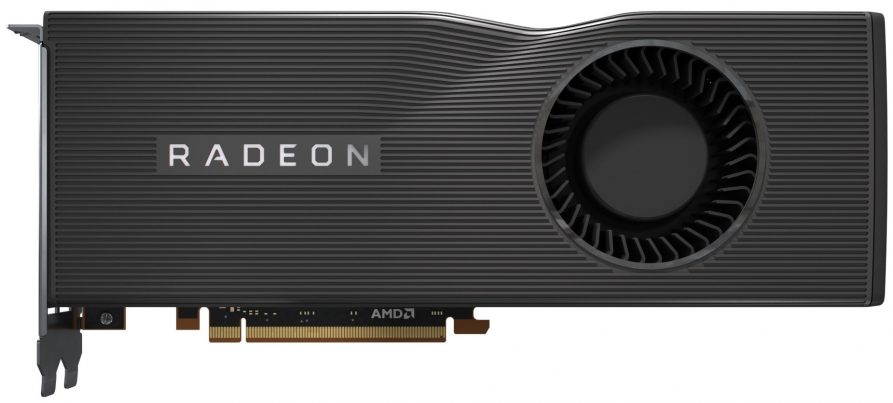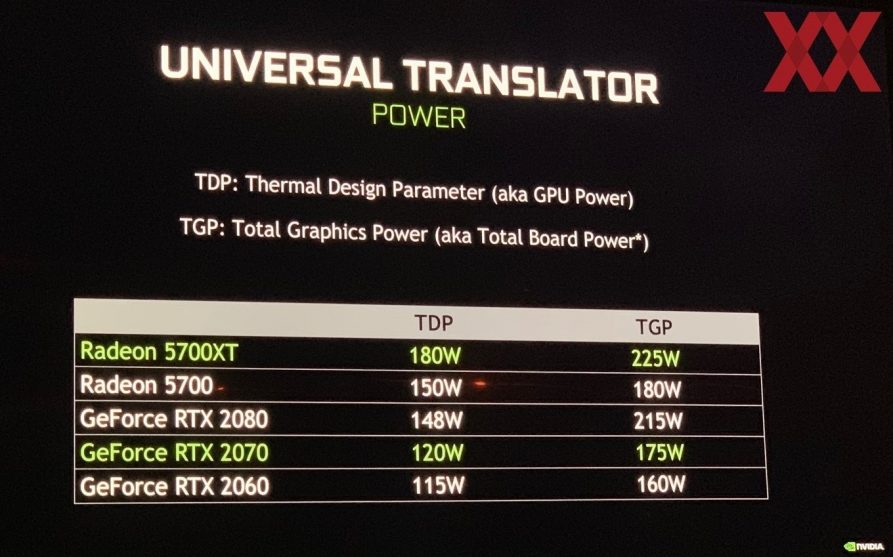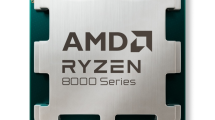Memory and storage controllers
When it comes to memory, the situation is clear, because you can use GDDR6 per module, whether Samsung or Micron, approx. 2 watts. With 8 GB of storage expansion, this then makes 16 watts, which you can and must expect. The memory controller gets a little more tricky, because it sits in the GPU, also generates waste heat and should therefore be recorded in the TDP if you take the term thermal design parameter literally. But neither AMD nor Nvidia can look into the cards here and reveal the respective values.
Nvidia supplies the memory through the phases for MVDD and the storage controller. This is difficult to drunde on, unless you measure voltages and currents there beforehand in the piece and pull off the memory again. At AMD there are two sources on Radeon VII, namely VDDRC for the HBM and VDDCI, on the Vega cards also MVDD and VDDCI. MVDD or VDDRC each supply the memory and VDDCI is abundantly special, but not a big item in terms of performance, although important.
In AMD, this voltage is used for the GPU-internal level transition between the GPU and the memory signal, so it is something like the voltage between the memory and the GPU core on the I/O bus. And where does the storage controller depend on at AMD? Both! The controller draws the supply from both sources, which in this case can no longer be separated cleanly. However, since I consider the memory controller to be part of the GPU, this item is to be priced in anyway with the TDP.
Estimate of TDP for each graphics card
First of all, I take a look at the photo of the colleagues of Hardwareluxx, who were delighted by Nvidia with an interesting slide, which should show both the overall power consumption and the GPU part. However, the information about the GeForce cards is not verifiable from my side, because we can only use the Founders Edition, but they have different overall power consumption values.
To simplify it, I use the GeForce RTX 2080 FE, the RTX 2070 FE and the RTX 2060 FE for this, admittedly greatly simplified calculation, which Nvidia also put against the new navigation cards in a rather ominous calculation. Since I don't know their circuit details and measured values, it becomes more difficult and therefore more speculative, because I have to resort to Nvidia's calculation. So this is all more of an estimate, because only after the first own tests, I can know more. But it still comes pretty close to it all.
The only thing I draw directly from the total power at 12 volts are the PWM-controlled fans. Otherwise, all assemblies require a lower voltage, so it must be generated via one or more of the many voltage converters. According to information from the board partners, I put the efficiency of all voltage converters at 83% for the big cards and 85% for the smaller ones, since I suspect that AMD will again be set to PLC.
With RAM, the value of 16 watts except for the lower-equipped RTX 2060 (12 watts) is realistic for all cards, because it corresponds to the specs. Other losses result from a mix of real measurement and estimation for assemblies resulting from experience or data sheet data. For the AMD cards, I used the values of the Vega 64 and RX 590. This results in the following, of course, purely hypothetical picture:
| RTX 2080 | RTX 2070 | RTX 2060 | RX 5700XT | RX5700 | |
| TBP (measurements) |
225 W | 185 W | 160 W | 225 W | 180 W |
| Fan | – 8 W | – 8 W | – 6 W | -9 W | – 7 W |
| = 217 W | = 177 W | = 154 W | = 216 W | = 173 W | |
| VR Losses | – 37 W (83% Eff) | – 30 W (83% Eff) | – 23 W (85% Eff) | – 37 W (83% Eff) | – 29 W (83% Eff) |
| Memory | – 16 W | – 16 W | – 12 W | – 16 W | – 16 W |
| Other | – 8 W | – 8 W | – 5 W | – 6 W | – 6 W |
| TDP (hypothetical) |
156 W | 123 W | 112 W | 157 W | 122 W |
Now it's going to be quite interesting. The values of Nvidia's cards, for which I was able to measure a lot, are almost identical to what was stated on the slide, because my measured total power consumption for the RTX 2080 FE and 2070 FE was also slightly higher, while the RTX 2060 FE coincides. However, if I now set the discounts of the total power consumption at Nvidia to the same extent with the AMD cards, then my calculation values are much lower. But they cannot be so wrong, because there is the same methodology behind it as with the GeForce RTX.
Take the Radeon RX 5700XT. This is a difference of 23 watts between what Nvidia indicates on the slide and my computing value. But my value is much more plausible, because if the TDP really had to be set at 180 watts, then the voltage converter losses should only be about. 13 to 14 watts, which would not be technically feasible at all. Because you always need RAM and fan, a power supply of the rest of the PCB as well. The values that Nvidia states on the slide are thus completely illogical and, with a little thought, can be recognized immediately as misinformation.
Conclusion
Don't trust any statistic foil that you haven't faked yourself! What I do not understand is the use of this data in such a simple comprehensibility of the calculation path, which also allows almost everyone to check the values quickly even without large measurements. However, if the information really comes from AMD in this form, then its "camouflage and deceit" department has done a lot of work and at Nvidia just penned someone. After a little thought, both values simply do not make sense. And we prefer to leave the miraculous multiplication to the Church, which has been very specialized in such a thing for centuries.


































Kommentieren